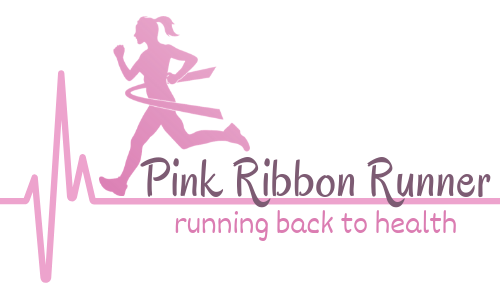How Can Exercise Help Me After Breast Cancer?
Sitting is destroying us. Many research studies have linked a sedentary lifestyle to many diseases, including breast cancer. The remedy is physical exercise. It does not matter what your body weight, fitness levels, or current abilities are. Any exercise is good for you. Let’s look at how working out benefits breast cancer survivors.

Is Exercise Safe for Breast Cancer Survivors?
Over 25 years ago, researchers started to investigate the impact of physical fitness on breast cancer rates. The first thing they wanted to know was is it safe for breast cancer patients to exercise. And what they discovered was that it was not only safe to exercise during cancer treatments, such as chemotherapy, radiation, and post-surgery, but it was beneficial to cancer recovery too.
“Exercise is safe across the cancer trajectory, including during difficult treatments and in some patients with advanced cancer (from time of diagnosis through treatments and beyond)”
Dr. K.S. Courneya, CRC, Physical Activity and Cancer, Faculty of Kinesiology, Sport and Recreation, University of Alberta
While going through treatments, it is best to join a supervised cancer exercise program. There are some potential issues associated with treatments that should be monitored by experts while you are exercising. Side effects of treatments such as anemia, immune suppression, and heart issues, make it important to work out in a safe environment that is supported by medical health professionals and trainers that specialize in cancer.
However, if you are finished your treatments and your doctor has cleared you to exercise, then a beginner’s exercise program may be safe for you. However, keep in mind that cancer treatments usually leave you less tolerant to exercise, so you may need to start slower and easier than traditional beginner programs for healthy persons.
Is A Beginner’s Fitness Program Safe After Breast Cancer Treatments are Finished?
Most beginner fitness programs are designed for healthy people. They may sound exciting and fun, but after breast cancer treatments, some beginner fitness programs may not be right for you… just yet.
If you choose to go to your local gym to workout, their programs are usually 45 to 60 minutes in duration. This is more than the recommended time for survivors recovering from cancer treatments.
The level of intensity of a traditional beginner exercise program is also likely beyond the level most breast cancer survivors can tolerate, at least initially.
Cancer and its treatments leave most survivors less tolerant to exercise. Cancer survivors need to build back their fitness slowly. You need to find a program or trainer that understands this. Fatigue, reduced flexibility, muscle weakness, lower ability to process oxygen, balance issues, and lymphedema are some of the complications a breast cancer survivor may experience. These make exercises more difficult.
You should not expect to just jump right back into your workouts after treatments are finished. I know how frustrating this can be. I have been there myself.
But, exercise, even at a lower intensity, can and will help you recover from treatments. Many studies over the past few decades have shown that physical exercise improves the quality of life of most breast cancer survivors. But you need to keep it light and easy in the beginning, until you are stronger.

What are the Benefits of Physical Exercise for Breast Cancer Survivors?
Breast cancer and its treatments can leave you feeling tired, stiff, sore, weak, off balanced, painful and swollen. And while exercising is harder for my fellow survivors, that does not mean that we should not exercise. Actually, the opposite is true. To help us feel better and live life to our fullest, we need to exercise.
Physical exercise has been shown to improve the quality of life for breast cancer survivors after treatments are finished. Many women report feeling stronger, more self-assured, less tired and happier after participating in fitness programs.
If you exercised before your cancer diagnosis, you may want to pay careful attention to this next statistic… A study comparing women who exercised before but decreased exercise after diagnosis had a 236% increased risk of mortality. Wow!
Will Exercise Improve Breast Cancer Treatment Side Effects?
Many of the side effects of breast cancer treatments can be improved with exercise. Not only does exercise help improve chance for survival, but it also helps you heal faster from your treatments. Being active is one of the most important things you can do to help yourself.
Physical fitness can be improved with regular exercise. An exercise regimen tailored to your needs can reduce cancer-related fatigue, as well as improve sleeping patterns. This can make it easier to cope with troubling emotions, fears, and anxieties.
Some exercises can also help you improve mobility, balance and muscle strength. This is important as cancer treatments can leave you feeling weak and debilitated. The range of motion of your upper body may be affected by surgery and radiation, leaving you frustrated. Chemotherapy may affect your nerves that can leave you off-balance at times. And lymphedema is improved with specific movements. A good workout program can help with these things.
A number of studies have been conducted on the mental and physical effects of exercise after breast cancer therapy. These studies indicate that being physically active after treatment leads to greater quality of life for those women. Regular exercise can help you rebuild your body and your life.

How Much Exercise is Needed to Improve Recovery After Breast Cancer?
Doing both cardio workouts and a strength training program can help improve recovery after breast cancer. To be effective, you should do about 30 – 45 minutes at least three times per week to improve fatigue and well-being.
If you are not feeling up to doing this much exercise, then the good news is that you can start easier. Any amount of exercise is good. Even if you can only do a few minutes a day, then do that.
Of course, if you feel up to the challenge, doing more is even more beneficial. Doing more vigorous workouts or for longer have shown double the benefit. So, as you are able, gently nudge yourself just a little to do a bit more each week as your fitness improves. It is important to be active, workout regularly, and sustain this for life.

Can Exercise Lower the Risk of Breast Cancer Recurrence?
Breast cancer survivors who continue to exercise regularly have a 48% lower risk for recurrence. In addition, there is also a significant reduction of risk for other types of cancers. Several studies have reported that just 3 to 4 hours of recreational walking per week can significantly reduce the risk for recurrence.
What Is the Best Exercise Program for Breast Cancer Survivors?
When you look at research into exercise and breast cancer survivorship, it is hard to say what the best exercise is. This is because the studies do not follow the same workout regimens. The studies are not standardized. Some used home walking programs, treadmill exercises, while others explored strength workouts.
However, one thing from all these studies is that exercise is safe and beneficial for those recovering from breast cancer treatments.
It is very likely that the best exercise program for breast cancer survivors incorporates a little of everything. Working on cardio fitness, strength, flexibility, and balance are all important aspects of physical fitness. And these are even more important after debilitating breast cancer treatments.
A well-rounded fitness program would include the following components:
- cardio
- strength
- mobility
- balance
1. Cardio Exercise Recommendations for Breast Cancer Survivors
The current recommendation is 150 – 300 minutes per week of moderate-intensity aerobic exercise. Moderate-intensity is a level that allows you to talk in full sentences while exercising.
This can be spread out over 3 – 5 days for 30- to 45-minute sessions, or 7 days for 25 – 30 minutes.
If you can work out to a higher intensity, then you do get double credit, so to speak.
The recommendation changes to 75-150 minutes per week of vigorous-intensity aerobic exercise, which has added benefits over sustained moderate-intensity cardio.
Vigorous-intensity is the level that only allows you to speak 1 – 3 words before you need to take your next breath. You won’t be able to talk in sentences at this level.
It is best to workout in shorter segments of high intensity, followed by an easier “rest” phase. These are HIIT (High Intensity Interval Training) workouts.
But, no matter where your current fitness levels are, there is a significant benefit over doing ANY cardio over not doing anything at all. So even a 5- or a 10-minute walk is better than sitting on the couch.
2. Strength Exercise Recommendations for Breast Cancer Survivors
Experts recommend 2 – 3 days per week of resistance training. This should include all the major muscle groups, including core, upper body, and lower body. Incorporating a variety of about 5 – 9 exercises will help with ensuring the major groups are covered.
1 – 3 sets of 8 – 12 repetitions are the goal. But keep the weights light in the beginning. You want the level to be about 25 – 85% of your maximum effort.
After surgery, the typical recommendation is not to lift anything over 10 pounds. However, studies show that slow progression in the amount of weight lifted will help improve strength and function of the upper body without increasing post-surgical complication rates.
Lymphedema is a common complication of breast cancer treatments. Lifting lighter weights and progressing slowly while wearing compression sleeves can help with the build up of lymph fluid. If you do have lymphedema, it is best to work with a lymphedema specialist and develop an exercise program specific to your needs.
Always start with lighter weights or easier body weight exercise modifications that feel “too easy” and progress slowly from there.

3. Mobility Exercise for Breast Cancer Survivors
Mobility is the ability to move freely, easily, and comfortably. Doesn’t that sound wonderful? It should be a goal of every exercise program, although there are no specific recommendations for mobility in survivorship guidelines.
Mobility exercises include movements that increase range-of-motion and stabilization of your joints. They help your joints function better, reduce the risk for injury during other workouts, and allow you to go about your daily life with less stiffness and discomfort.
Mobility involves stretching and improving flexibility, but it is not the same thing as stretching or flexibility. Flexibility refers to lengthening a muscle which is achieved through stretching. Mobility is the ability to move a joint as it was designed to be moved, which requires muscle flexibility, strength, and stability.
There are many simple exercises that you can do every day to improve mobility. Mobility workouts, yoga, and dynamic stretches can all help you move better. These exercises can also be an excellent way to warm up or cool down from your main workouts. Or they can be added in between sets of strength exercises to save you time and do your workouts more effectively.
4. Balance Exercise Recommendation for Breast Cancer Survivors
There are two components to balance: your core muscle strength and your brain’s visual and vestibular system. Any exercise that works on your core muscles will help improve your balance. And seeing and feeling your body move around, in general, will help retrain your brain’s balance centers. Although there are some exercises, like standing on one leg, that are better for improving balance than others.
Some breast cancer survivors suffer from neuropathy, or abnormal nerve sensations, that can affect balance. Unfortunately, there is no good scientific evidence that exercise can help with this problem. However, this is not a reason to forego exercise altogether, as you would be missing out on other benefits. But it does mean that those with neuropathy need to be extra cautious and tailor an exercise program to their needs. Assisted walking, with Nordic walking poles for example, can help with cardio exercises. Using a chair for support during strength workouts or chair yoga are other good ways to get some needed exercise.
“studies highlight the importance of breast cancer survivors engaging in any amount of physical activity they can, increasing their activity level when possible, and especially not decreasing physical activity after their diagnosis and treatment”
From American Cancer Society nutrition and physical activity guideline for cancer survivors, CA CANCER J CLIN 2022;0:1–3
What are the Dangers of Exercise After Breast Cancer Treatments?
There is no doubt, exercise is important for breast cancer survivors. However, there are some things to consider before starting an exercise program right out of treatments. It is always a good idea to have a chat with your oncologist about exercise.
Fatigue
While exercise can help with fatigue, the tiredness that some survivors feel after breast cancer treatments can make exercise feel impossible. Try to do short bursts of exercise throughout the day or exercise when your energy levels are higher. Remember that any exercise is better than none. Keep your exercises light and easy and progress very slowly. Keep a journal of your fatigue levels to know if a particular exercise is helping or not. If an exercise is zapping your energy, perhaps try a different one to see if you feel better.
Lymphedema
Lymphedema is a swelling from poor lymph fluid drainage from a particular area of the body. For breast cancer patients this is usually an arm or the chest area on the side of the cancer. The right exercises can help improve lymphedema swelling. However, some exercises can aggravate symptoms. If available, it is best to do exercises prescribed by a lymphedema specialist.
Anemia
Anemia is a low red blood cell count, usually the result of chemotherapy. If you are anemic, your blood can’t carry as much oxygen. This can leave you feeling dizzy, weak, or short of breath during your workout. Rest if you just are not feeling up to doing much. Save exercise for another day when you are stronger.
Cardiovascular Issues
Chemotherapy and chest radiation can also harm the heart and lungs. This can make exercise difficult, if not dangerous. It is important to see your oncologist before starting any exercise program.
If you have any heart, lung, anemia or other blood complications, it is best to participate in a doctor-supervised exercise program until you are strong enough to workout unsupervised.
Neuropathy
As discussed earlier, neuropathy is a side effect of some breast cancer therapies, usually chemotherapy. It causes a numbness, tingling or pain sensations in the peripheral nerves. It can affect balance and grip strength. So, added precautions are necessary to safely exercise when a survivor has neuropathy.
Immune System Compromise
Some breast cancer treatments, such as chemotherapy, can make you prone to infections. Thus, working out in a gym may not be such a great idea. Gyms can be a source of spread for infectious diseases. In a healthy person, who’s immune system can fight off any invaders, this isn’t an issue. But if your immune system hasn’t yet recovered from treatments, then you may want to stick to at-home workouts until you are stronger.
Now… Go be active! Slowly, gently and safely. You deserve to feel good.

Post Photo Credits: depositphotos.com









